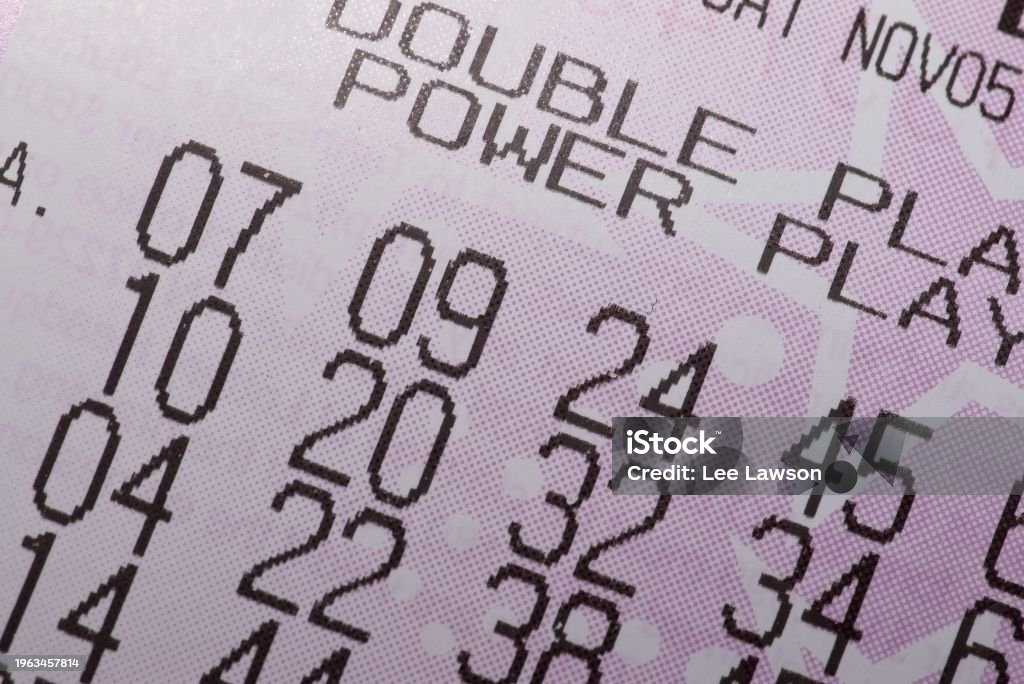
Lottery Number Generator Powerball
Powerball Generator
Saved Numbers
Powerball: America’s Game of Dreams and Mathematical Improbability
The gleaming red and white Powerball logo has become an iconic symbol of American lottery culture, representing both the boundless dreams of millions and the complex mathematics of probability that govern this nationwide game of chance. Since its inception, Powerball has captured the imagination of the American public, creating thousands of millionaires and generating billions in revenue for participating states. This comprehensive exploration delves into the fascinating history, record-breaking jackpots, and the intricate details of America’s most famous lottery game.
The Birth and Evolution of a Lottery Giant
Powerball’s story begins in 1988 when the Multi-State Lottery Association (MUSL) was formed by several U.S. lotteries seeking to create games with larger jackpots than any single state could generate alone. The inaugural Powerball drawing took place on April 19, 1992, marking the beginning of what would become America’s most recognized lottery game. The initial format was relatively simple compared to today’s version, with players selecting five numbers from 1 to 45 and one Powerball number from 1 to 45.
The game’s early years saw modest but steady growth as more states joined the MUSL and began offering Powerball. The decision to join wasn’t just about potential revenue; it represented a significant shift in how state lotteries operated. Rather than competing against each other, states began collaborating to create more attractive jackpots that could compete with other forms of gambling and entertainment.
Throughout the 1990s and early 2000s, Powerball underwent several format changes to keep the game fresh and maintain player interest. Each modification was carefully calculated to achieve specific goals: bigger jackpots, better overall odds of winning any prize, or more frequent winners of smaller prizes. The most significant change came in October 2015 when the game introduced its current format, with players choosing five numbers from 1 to 69 and one Powerball number from 1 to 26.
The Mechanics Behind the Millions
Today’s Powerball is a masterclass in probability theory and game design. Players must match five white balls drawn from a pool of 69 numbers, plus the red Powerball drawn from a separate pool of 26 numbers. This format creates odds of 1 in 292,201,338 for winning the jackpot – a number so large it’s difficult for the human mind to comprehend.
The game’s pricing structure has also evolved over time. In 2012, the ticket price doubled from $1 to $2, a move that allowed for larger starting jackpots and faster growth between drawings. This price increase, combined with the format changes, has been instrumental in creating the massive jackpots that have become Powerball’s trademark.
One of the game’s most ingenious features is the Power Play multiplier option, introduced in 2001. For an additional dollar per play, winners can multiply non-jackpot prizes by up to 10 times. This feature has helped maintain player interest even when jackpots are relatively low, as it provides the opportunity for significant wins without hitting the grand prize.
Record-Breaking Jackpots That Captured National Attention
Powerball has repeatedly broken its own records for the largest lottery jackpots in history. These astronomical sums have not only captured public attention but have also driven ticket sales to unprecedented levels. The most notable jackpots include:
The $2.04 billion jackpot won on November 7, 2022, in California stands as the largest lottery prize in history. This mind-boggling sum was claimed by Edwin Castro, who chose to take the lump sum payment of approximately $997.6 million before taxes. The jackpot had rolled over 41 consecutive times before being won, creating a fever pitch of excitement across the country.
The $1.586 billion Powerball jackpot from January 13, 2016, held the previous record and was particularly notable because it was split between three winning tickets in California, Florida, and Tennessee. This jackpot marked the first time a U.S. lottery prize had exceeded $1 billion, creating unprecedented media coverage and public interest.
The $768.4 million jackpot won by Manuel Franco of Wisconsin in March 2019 stands as one of the largest single-ticket Powerball wins in history. Franco’s story captured public attention not just for the size of his win but for his youth – he was just 24 years old when he claimed the prize.
The Social and Economic Impact of Powerball
Powerball’s influence extends far beyond the winners’ circles. The game has become a significant source of revenue for participating states, with portions of ticket sales supporting various public programs including education, infrastructure, and environmental conservation. In fiscal year 2019 alone, U.S. lottery sales exceeded $91.3 billion, with Powerball accounting for a substantial portion of that total.
The game’s economic impact is multifaceted. Besides generating revenue for state programs, it creates employment opportunities through the network of retailers who sell tickets. These retailers earn commissions on ticket sales and bonuses for selling winning tickets, providing an additional revenue stream for many small businesses.
However, the social impact of Powerball and other lotteries remains a subject of debate among researchers and policy makers. Critics argue that lotteries disproportionately affect lower-income individuals who spend a larger percentage of their income on tickets. Supporters counter that the voluntary nature of lottery participation and the public benefits derived from lottery revenue justify the game’s existence.
The Science of Selection: Hot and Cold Numbers
While Powerball is fundamentally a game of chance, many players are interested in patterns within the numbers drawn. “Hot” numbers are those that have been drawn more frequently in recent history, while “cold” numbers appear less often. However, it’s crucial to understand that each drawing is an independent event, and past results have no bearing on future drawings.
Most Commonly Drawn Numbers (2010-2024)
- White Balls:
- 32 (drawn 45 times)
- 23 (drawn 42 times)
- 61 (drawn 41 times)
- 53 (drawn 40 times)
- 69 (drawn 39 times)
- 64 (drawn 38 times)
- 3 (drawn 37 times)
- 21 (drawn 36 times)
- 27 (drawn 35 times)
- 62 (drawn 34 times)
- Powerball Numbers:
- 24 (drawn 45 times)
- 18 (drawn 42 times)
- 4 (drawn 40 times)
- 13 (drawn 39 times)
- 10 (drawn 38 times)
- 6 (drawn 37 times)
- 26 (drawn 36 times)
- 19 (drawn 35 times)
- 9 (drawn 34 times)
- 15 (drawn 33 times)
Record-Breaking Jackpots That Captured National Attention
Powerball has repeatedly broken its own records for the largest lottery jackpots in history. These astronomical sums have not only captured public attention but have also driven ticket sales to unprecedented levels.
Notable Powerball Jackpot History
Heights are proportional to jackpot amounts
The visualization above shows the dramatic increase in jackpot sizes over recent years, culminating in the historic $2.04 billion win in 2022. This trend reflects both the game’s growing popularity and the format changes that have made larger jackpots possible.
Based on historical data analysis, some numbers have appeared more frequently than others in Powerball drawings. Popular white ball numbers have included 32, 23, 61, 53, and 69, while 24, 18, and 39 have been among the most commonly drawn Powerball numbers. However, these patterns are historical observations rather than predictive tools, and their relevance to future drawings is purely mathematical curiosity.
Strategies for Playing Powerball
While no strategy can improve the odds of winning the jackpot, there are approaches that can enhance the overall playing experience and potentially maximize returns on smaller prizes:
Pool Play: Joining or forming a lottery pool can increase your chances of winning by allowing you to purchase more tickets while managing costs. However, it’s crucial to have clear written agreements about how winnings will be shared and how the pool will be managed.
Systematic Play: Some players use systematic approaches to select numbers, such as choosing a balanced mix of odd and even numbers or high and low numbers. While these strategies don’t improve winning odds, they can help ensure that if you do win, you’re less likely to share the prize with others who might have chosen the same common number patterns.
Budget Management: The most important strategy is setting and sticking to a reasonable budget for lottery play. Treat lottery tickets as entertainment expenses rather than investments, and never spend more than you can afford to lose.
The Role of Technology in Modern Powerball
Technology has dramatically changed how people interact with Powerball. Many states now offer online ticket purchases and subscription services, making it easier than ever to participate. Mobile apps allow players to scan tickets, check results, and receive notifications about drawings and jackpot amounts.
The implementation of computer-controlled drawing machines has also enhanced the security and integrity of the game. These machines, along with strict protocols and multiple layers of oversight, ensure that drawings are completely random and free from manipulation.
The Psychology of Playing Powerball
The massive jackpots and extensive media coverage of winners have made Powerball a cultural phenomenon that taps into deep-seated psychological desires. The game offers more than just a chance at wealth; it provides hope and the opportunity to dream about a dramatically different life.
Psychologists have studied the “anticipatory pleasure” that lottery players experience between purchasing a ticket and learning the results. This period of possibility, when any outcome seems achievable, can provide genuine enjoyment regardless of the actual outcome.
Responsible Play and Problem Gambling Prevention
While most people play Powerball responsibly as a form of entertainment, the game can potentially contribute to problem gambling behavior in susceptible individuals. The lottery industry has responded by implementing various responsible gaming initiatives, including:
Self-exclusion programs that allow individuals to voluntarily ban themselves from purchasing lottery tickets
Training for retailers to identify and assist potentially problematic players
Educational materials about responsible gaming and problem gambling resources
Funding for gambling addiction treatment and prevention programs
The Future of Powerball
As Powerball moves into the future, several trends and potential developments could shape its evolution. Digital technology will likely play an increasingly important role, with more states potentially offering online sales and mobile-friendly platforms. The game might also explore new features or formats to maintain player interest and compete with other forms of gaming and entertainment.
However, the core appeal of Powerball – the chance to win a life-changing sum of money for a relatively small investment – will likely remain unchanged. The game has demonstrated remarkable resilience and adaptability over its three-decade history, consistently evolving to meet changing player preferences while maintaining its fundamental appeal.
Conclusion
Powerball represents more than just a lottery game; it’s a cultural institution that has captured the American imagination for over three decades. Whether viewed as a form of entertainment, a source of public funding, or a sociological phenomenon, its impact on American society is undeniable.
While the odds of winning the jackpot remain astronomical, millions of Americans continue to participate, driven by the tantalizing possibility of a life-changing win. The game’s longevity and popularity suggest that Powerball will continue to evolve and attract players well into the future, maintaining its position as America’s premier lottery game.
For those who choose to play, the key is to approach the game with realistic expectations and responsible gaming practices. While everyone dreams of winning the jackpot, the true value of Powerball might lie in the momentary escape it provides – a chance to imagine the possibilities that come with sudden wealth, all for the price of a ticket.
